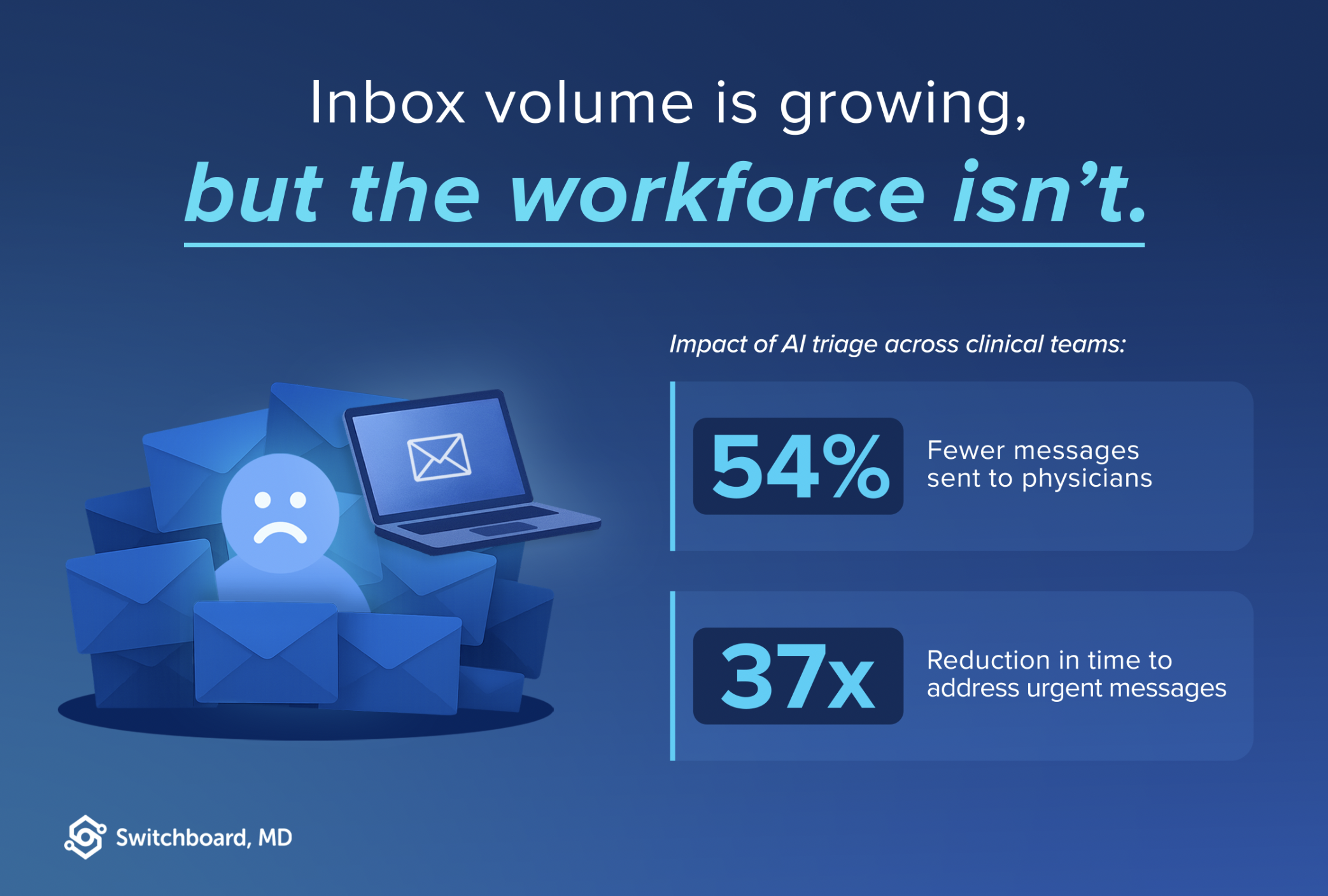Solving the inbox crisis requires more than hiring inboxologists. It requires a smarter system.
As a physician, I’ve felt the weight of the inbox firsthand. Every evening, a growing backlog of patient portal messages would compete with the need to rest, spend time with family, or simply catch my breath. And I wasn’t alone. Clinicians everywhere are struggling to keep up, and it’s taking a toll on both care teams and patients.
Lately, health systems have started hiring for a new role: the inboxologist. These professionals are tasked with screening, triaging, and responding to patient messages so physicians can focus on clinical work. It’s a promising idea. In fact, a NEJM Catalyst study showed that inboxologists reduced physician message volume by 41% and cut patient response times by 93%.
But there’s a problem: we’re running out of people.
Healthcare is already facing a massive workforce shortage. We’re short on physicians, nurses, and medical support staff; and the pipeline simply isn’t refilling fast enough. So, while adding more personnel may seem like a logical response to the growing inbox burden, it’s becoming clear that this approach alone may not be sustainable at scale.
That’s why my team of multi-specialty physicians and I developed a unique solution: an AI triage agent trained directly by clinicians. It’s designed to do several aspects of what an inboxologist does—understand the context of a patient message, determine clinical urgency, and route it appropriately—but with the ability to scale system-wide without adding headcount.
The model’s performance has also been rigorously validated. In a recent NEJM AI study, our NLP triage system accurately classified patient messages with 98% accuracy, enabling safe and efficient routing at scale.
For our health system partners, this proprietary, healthcare-focused AI helped teams achieve:
54% fewer messages sent to physicians
97% reduction in time to address urgent messages
(from 16.6 hours → 27 minutes)
While an AI triage agent doesn't fully replace an inboxologist, it tackles the most repetitive and time-consuming tasks at scale, and without adding headcount. It can integrate directly with their EHR with minimal disruption, deliver immediate impact, and helps systems understand whether inboxologists are still needed, and how many.
That matters, because reducing clinician burnout, improving patient access, and maintaining care quality can’t be solved through staffing alone. We need tools that extend the reach of every clinician. Tools that work alongside care teams, not in place of them.
AI isn’t a silver bullet. But when designed by those who understand the clinical workflow, it can be a powerful force multiplier. It’s time we stop expecting physicians to bear the burden of outdated systems, and start giving them the tools they need.
Sincerely,
Blake Anderson, MD

